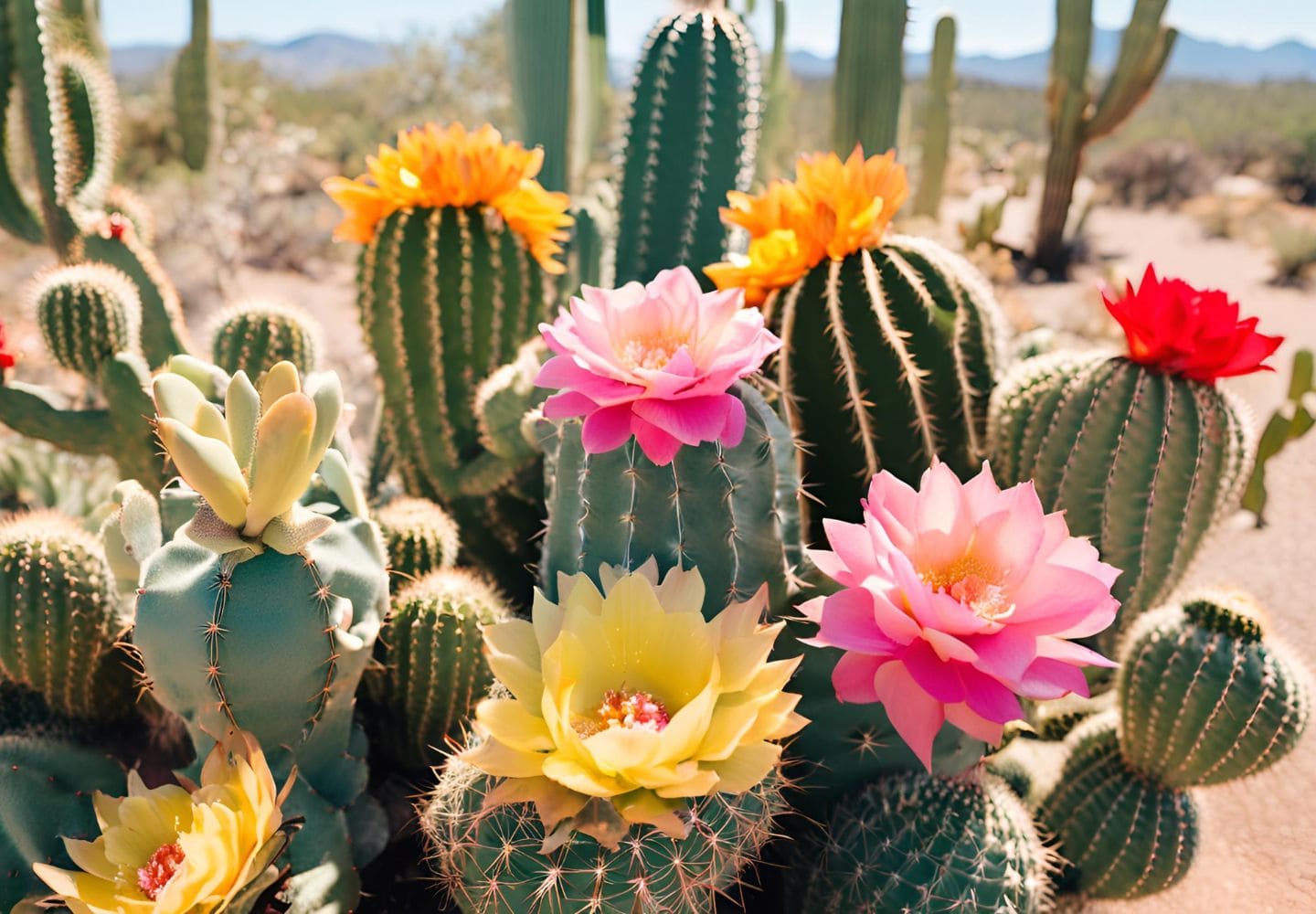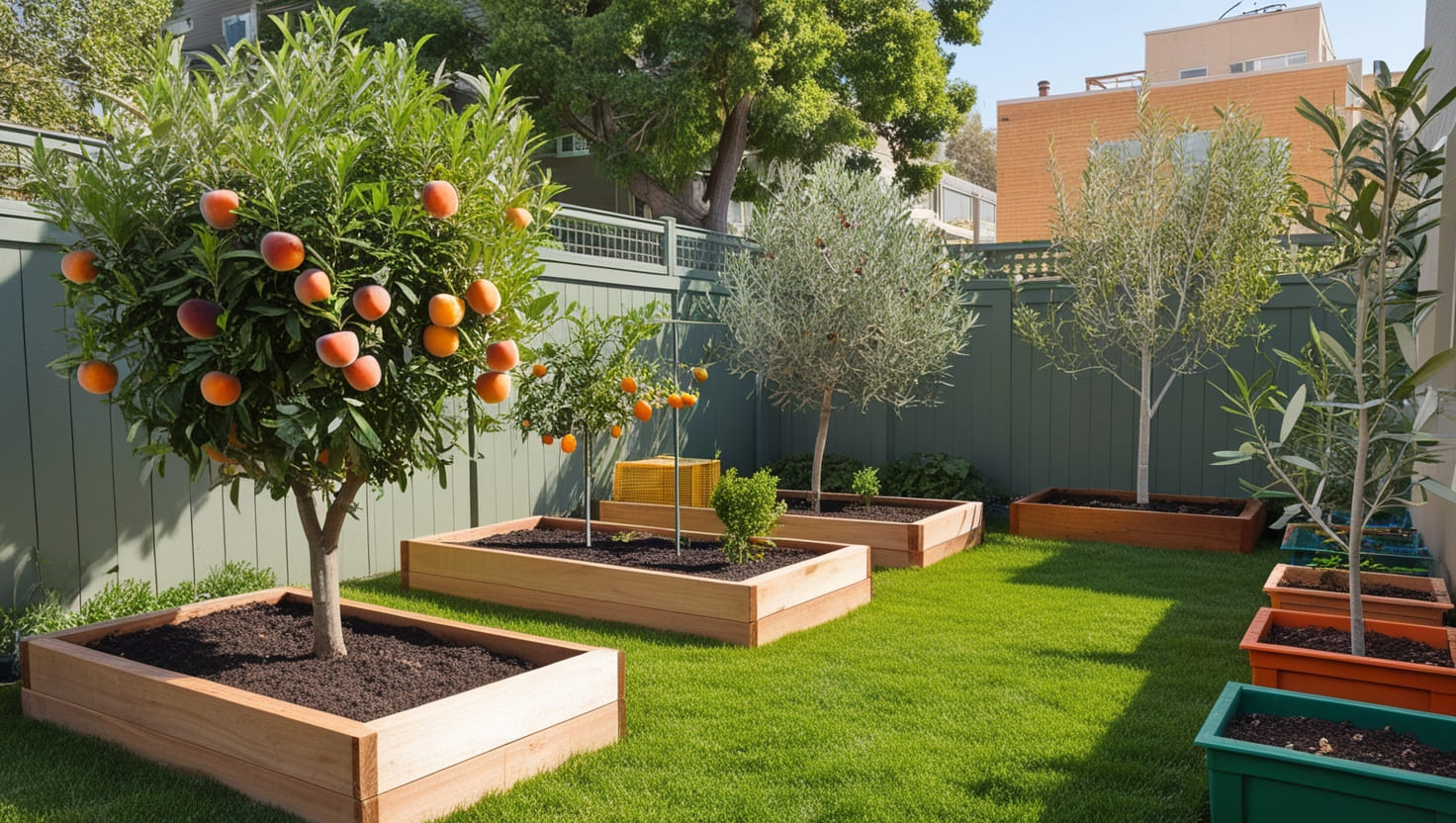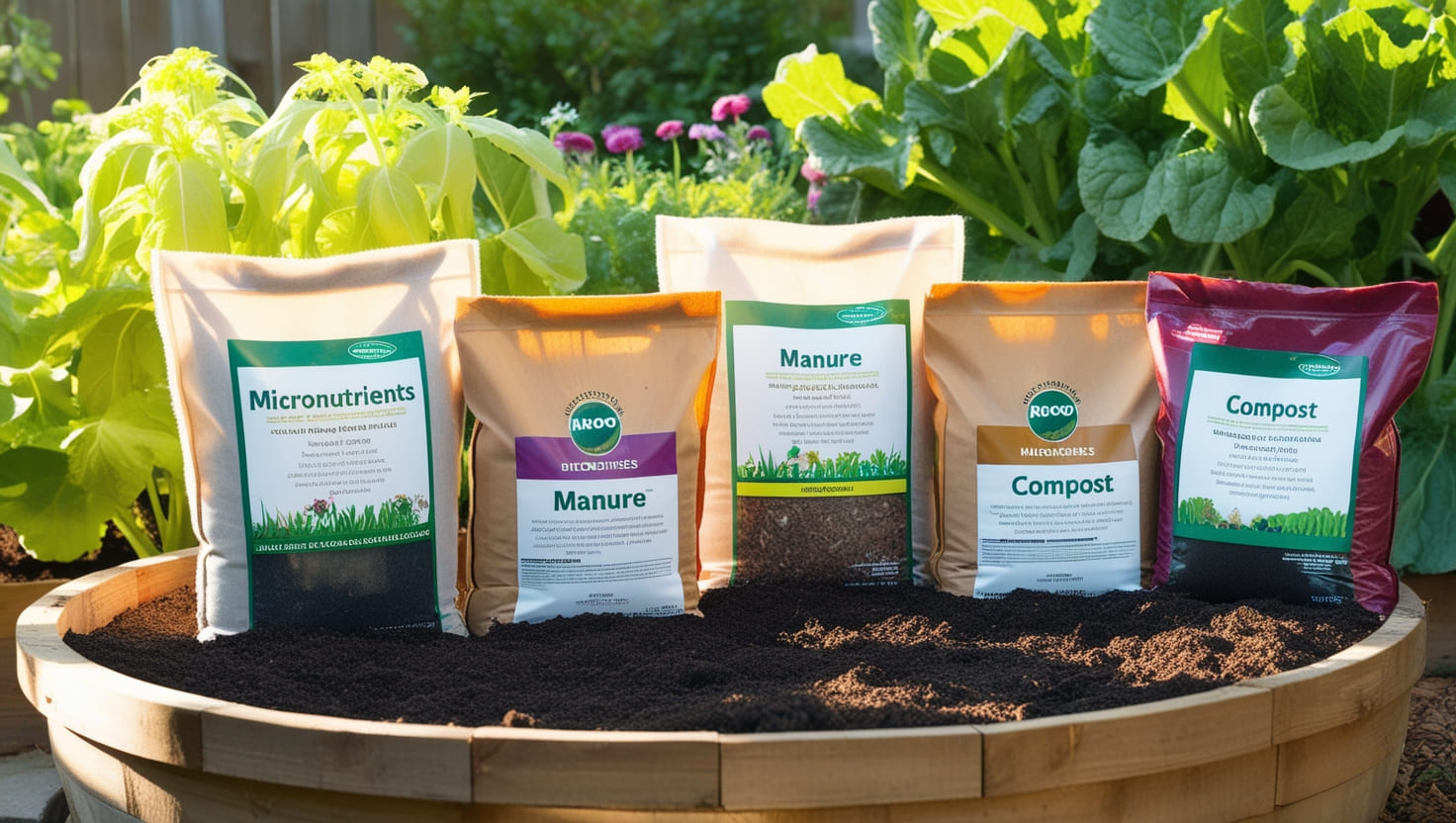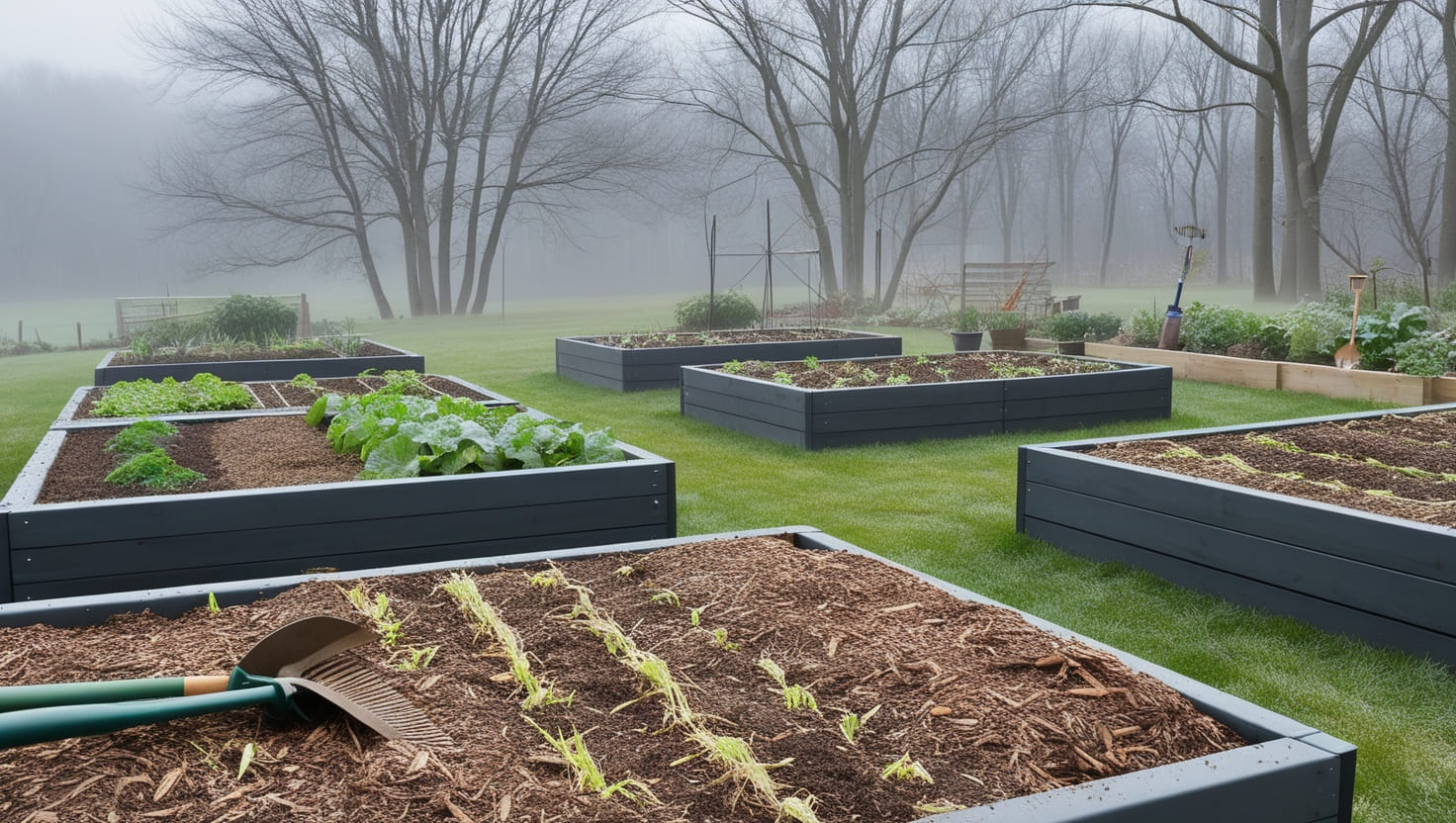
All About The Flowering Cactus
Gardeners and plant lovers adore flowering cacti due to their beautiful flowers and ease of care. Tough plants by nature, originating from arid areas of the South West and Mexico can live in environments that very few other land-based plant species are able to exist. Flowering cacti are gorgeous and they can be used in many situations as decoration, both inside a home or outside it.
In this article, you will know everything that flowering cacti types exist and how they grow certain conditions to care for them as well; required tips from experts. An essential guide for novices and experienced gardeners alike, by the one of the world’s best-known field guides writers.
Types of Flowering Cactus
Common Flowering Cactus Species
There are a variety of cactus species that have some very colorful flowers such as the echinocereus which displays pastel rainbow shades, and each floral offering has a different look to it. This botanical grouping includes the Echinopsis (large and colorfully blooming), Rebutia (small flowers in bright colors) and Schlumbergera (better known as Christmas cactus). They are not only easy to grow but also very common making them the perfect succulent for beginners.
Rare and Exotic Varieties
Epiphyllum and Lophophora (Peyote cactus) are the most exotic types you can get to expand your collection of cacti. While they may require a little more work, these are aesthetically interesting plants usually with special flower types.
Growing Conditions for Flowering Cactus
Climate and Temperature Requirements
Most blooming cacti grow best in hot, completely dry environments. For example, most daylilies thrive in full sun. A few cacti, however, are able to do well in partial shade and this is particularly true for very hot areas. Flowering cacti are at their best with temperatures from 70°F to 90°F during the day and a bit cooler in nights. If you love Mushroom, you can read about Oyster Mushrooms: Cultivation, Nutrition, and Recipes!
Soil and Nutrient Needs
Cacti rarely have problems with root rot but prefer extremely well-draining soil. Good drainage is underway when water runs through a mix of sand, gravel, with just the smallest amount organic material. This is best applied sparingly and with a balanced fertilizer during the growth season to promote robust blossoms.
Watering and Humidity
Cacti Although drought-tolerant, cacti also need regular watering during their growing season. Be sure to water the plant though: allow the soil to dry out entirely between watering. They should be in low humidity reflecting their natural dry desert home.
Planting Flowering Cacti
Choosing the Right Pot
Picking the best flowerpot is important when it comes to caring for your blooming cactus. Make sure the pot has drainage holes so that water does not stand at their roots. Terra cotta pots are often suggested as they allow moisture to evaporate, which lessens the chance of overwatering.
Steps to Planting
Begin by filling your pot with well-draining cactus mix. Put the cactus in then put as much same grade of dirt over from when squeezing…making sure roots are spread. Pepper the roots with a little soil, so that the cactus sits proud at its soil line. Water lightly after planting.
Transplanting and repotting advice
Most cacti should be repotted every 2-3 years to change the soil completely and for growth. Failure to do so when repotting may cause damage to the roots. Do this best in the spring, just before your cactus is about to begin growing its season.
When And How Do They Flower?
When to Expect Blooms
A flowering cactus will usually bloom in the spring and summer, but philodendrons can flower throughout the entire year. Under the right conditions, some cacti may even produce blooms more than once a year.
Factors Influencing Blooming
There are 3 things that make cactus blossom, light hours in a day (the uk is short of daylight compared to texas) the temperature they get and also how damp/wet or dry there soil roots are. To unlock blooms, plants need to be properly cared for like being in the right amount of sun and only when they have reached the brink of drought.
Caring for Flowering Cactus
Watering Schedule
Water your cactus once a week, but make sure the soil dries out between waterings during growing season. During the winter months as a cactus goes dormant you will want to cut back on watering. Some of you may be familiar with another common problem involving Watering too Much which often leads to Root Rot.
Fertilization Tips
Apply a balanced water-soluble cactus fertilizer. During the growing season, apply once a month. Do not fertilize winter months, as this would cause to overgrowth and weak plants.
Pest and Disease Management
Cacti with flowers are usually well-mature, but they still can be targeted by pests like mealybugs and spider mites. Inspect your plants for pests on a regular basis and treat when needed with insecticidal soap or neem oil. Fungal infection can also occur with extremely high moisture levels, so provide correct drainage and airflow.
Pruning and Maintenance
Pruning for Better Bloom
Pruning infrequently is not required for all types of cacti but removing dead parts inevitably helps maintain healthy growth with positive effects in bulbs”). Make clean cuts with a sharp knife or pruning shears in plants.
Seasonal Maintenance Routines
On top of pruning, regular maintenance involves looking for pests, breaking up the surface soil and making sure your cactus is getting enough light. Adapt your care routine according to the season: more water, light and fertilizer in spring–summer months (growth); less of all 3 elements in fall-winter periods.
Common Problems and Solutions
Dealing with Overwatering
Flushing is one of the biggest problems for cacti. Symptoms of this disease include yellowing and softening of the plant. If over watering reduce water and make sure the pot has proper drainage. You can also re-pot the plant in fresh new soil that is completely dry, as this might revive the dying fittonia.
Common Pests and Diseases
A thorough monitoring of the common pests — mealybugs and spider mites can dicontrol (with appropriate treatment) in this case. To avoid killing common houseplant, disease and numbers of funguses repellent must be properly maintained Mercers are avoided the best by keeping your plants well aerated And using minimal water.
Combatting Poor Flowering
If your cactus is not blooming then perhaps its not getting enough light or you are watering it too much. Keep it in a bright spot and let up on the watering during its dormant time of year.
Propagation Techniques
Seed Propagation
It also should be mentioned that this process takes long time. White varieties are started from seed in a well-draining soil mix and have to be placed in a warm, bright location. Ruby Red is grown on its own root stock as it’s prone to virus when grafted on plum. Water sparingly and wait as sprouting may even take few weeks.
Cutting Propagation
The best quick way to propagate a cacti is using cuttings. All you have to do is take your healthy cutting from the parent and let it dry out for a couple of days so that they callous before planting them into well-draining soil. Do not overwater until roots take hold.
Grafting Cacti
Grafting involves joining two different cacti species to create a single plant. This technique is often used to propagate rare or delicate cacti. Ensure both the stock and scion plants are healthy before grafting.
Different Flowering Cactus Species for Gardens at Home
Best Cacti for Beginners
Mammillaria and Gymnocalycium are good cacti for starters. Pruning will help you when it comes to controlling your plants, allowing them blossom with hardly any time or effort.
Low-Maintenance Varieties
Echinocereus and Astrophytum are just a couple of cacti famous for their ability to withstand the most stringent maintenance routines, ideal plants for busy gardeners.
Dramatic Foliage Choices
Cacti such as the Saguaro or Golden Barrel are examples of those that make a statement – they have big shapes and bold blooms. These types can be your focal points in a garden.
Flowering Cactus Design
How To Incorporate Cacti into Your Garden Design
From flowering cacti that go great indoor or outdoors…) The unusual shapes and colorful flowers on these plants, make them a perfect choice for the rock garden, as well as in pots or standing solitary.
Creating a Cactus Garden
How to Grow a Cactus GardenSelect a sunny location with good drainage. Combine various types of cacti to aid in adding interest, also make sure you add some stones or gravel substrate that they would find naturally.
Indoor & Outdoor Display Concept
Flowering cacti also work well for indoor displays, in decorative pots on sunny windowsills or grouped with other succulent varieties. Great for beds, rows rockeries or dotting around in larger gardens. Open air
Professional advice for anyone growing flowered cacti
Advice from Cactus Growers
Some cactus growers with years of experience under their belts suggest you start your journey into growing the prickly plants by sticking to a few easy-to-grow varieties until later in your hobby. They also stress the need to get familiar with what every cactus calls for, in terms of growth and flowering.
Examples of Effective Gardens
Many case studies of thriving cactus gardens center around location and routine maintenance practices. One story, for instance, tells of a gardener who took an overgrown backyard and turned it into a successful cactus garden by ensuring quality soil preparation from the start so that she could plant correctly according to how plants may react.
The Bright Future of Flowering Cacti in Gardening
Trends in Cactus Cultivation
The appeal for cactus is on the rise, as gardeners discover that these plants are attractive and need relatively low maintenance. Some of the trends include using cacti in urban gardens; xeriscaping as well as decorative indoor plants.
Cacti in Sustainable Landscaping
Besides being known for their unique appearance, cacti are also an important part of sustainable gardening as they require very little water and can withstand difficult conditions. With the growing emphasis on water conservation, cacti are set to play an even larger role in landscaping and garden design.
MYTHS OF THE FLOWERING CACTII
Exploring some popular myths
A common myth about cacti is that they are impossible to kill because they require so little care or attention. Although they are low-maintenance, but still needs some help and care to make things work. Another one is that all cacti have thorns, when in fact quite a few of the species actually has just smooth spines or hair-like inspis.
Understanding the Realities
One of the keys to successful gardening with flowering cacti is understanding what these plants really need. These plants need a few conditions met to keep them healthy, such as plenty of sunlight (a southern exposure), well-draining soil and regular watering.
Conclusion and Final Thoughts
Flowering or blooming cacti can add beauty to your garden, and on top of that, many fall also in the category of being low maintenance plants which pretty much remains a worry-free gardening option. You can experience the beautiful blooms and amazing charm of these plants by following some tips and guides in this article. Flowering among cacti can be a plaque garden of discovery and delight for both new to old hand cultivators.
FAQ.
The lifespan of cactus flowers varies by species. Some flowers last only a day, while others may last a week or more. Echinopsis flowers, for example, often bloom at night and may last only 24-48 hours.
Yes, many flowering cacti can be grown indoors as long as they receive sufficient light. Place them near a south-facing window or use grow lights to provide the necessary brightness. Be mindful of temperature and watering needs, especially during the winter dormancy period.
Once the flowers fade, you can carefully remove them to prevent the plant from using energy on seed production. This also keeps the cactus looking tidy. Regularly check for and remove any dead or dried flowers.
To encourage flowering, ensure your cactus gets enough sunlight and avoid overwatering. During the winter, allow the cactus to experience cooler temperatures (around 50-60°F or 10-15°C) and reduce watering. This period of dormancy helps stimulate blooming in the spring.
Several factors can affect flowering, such as insufficient light, improper watering, or lack of a dormancy period. Ensure that your cactus is receiving adequate sunlight and that you are following proper watering practices. If the cactus is too young, it may need more time before it starts flowering.




